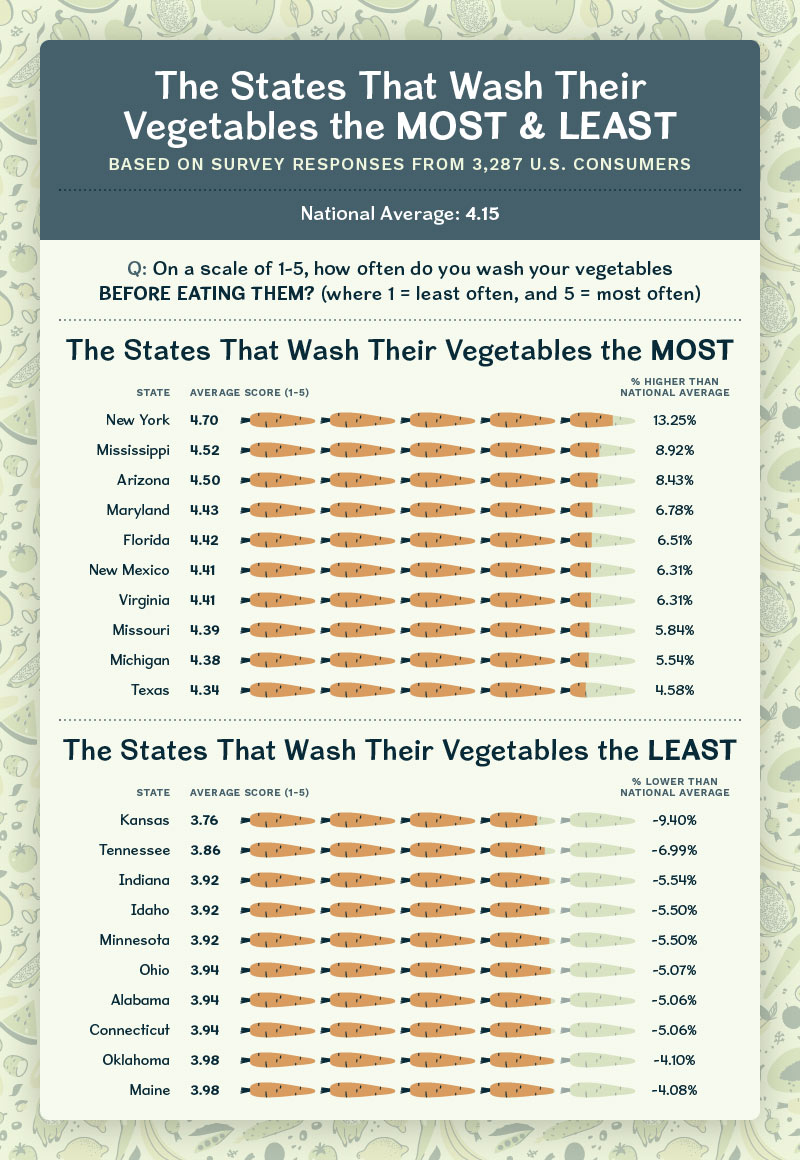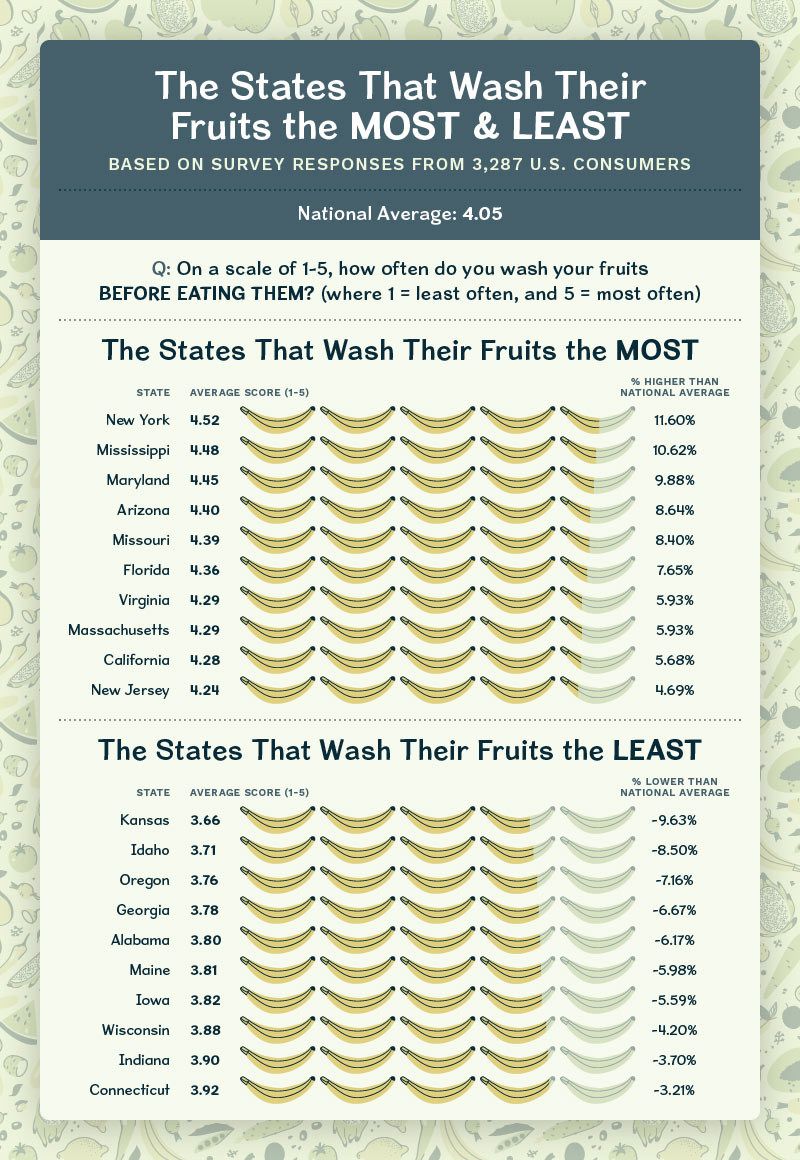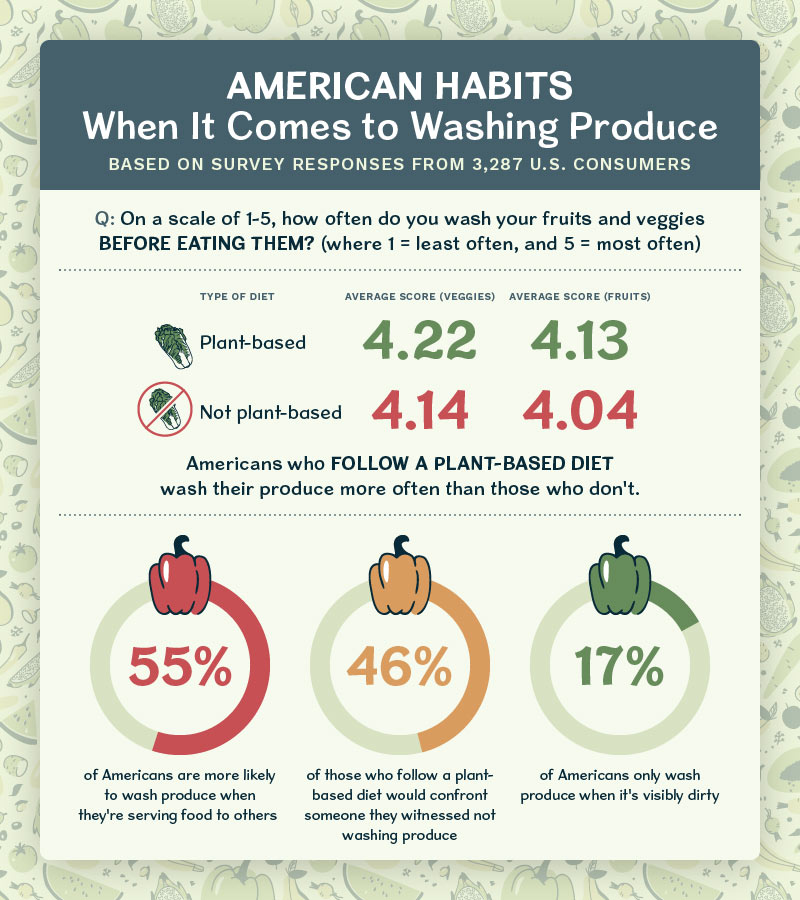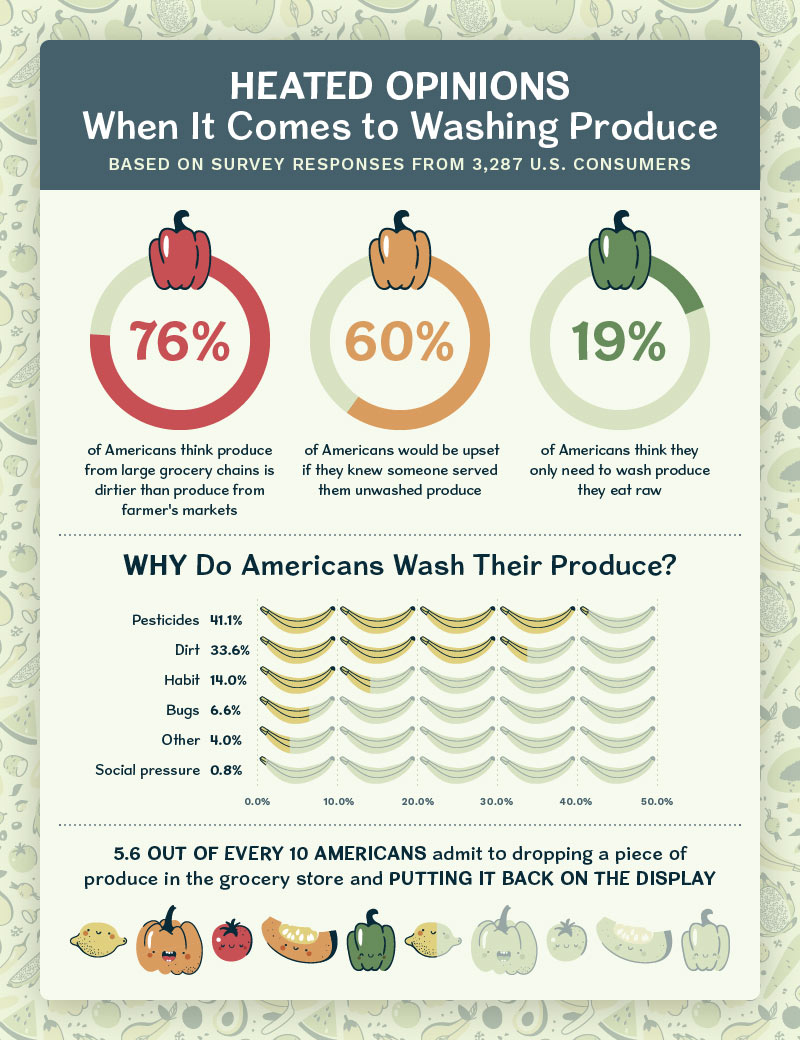Do You Wash Your Produce?
Americans are pressed for time; so when it comes to meal prep, many of us may be tempted to splash a few droplets of water on our produce or skip the produce washing altogether. But we implore you—carve out some time to give your produce a thorough wash before eating or serving it. You’ll be glad you did.
The CDC estimates that 48 million people get sick in the U.S. each year due to foodborne illness, and produce accounts for nearly half of those illnesses (46%). The E. coli outbreak tied to romaine lettuce in recent years stands out as a notable example.
So if foodborne illness is so pervasive, the question remains: how many of us actually wash our produce before eating it? The team at Gurney’s decided to investigate. We surveyed over 3,200 U.S. consumers from July 1-15, 2021 to uncover which states residents are washing their produce the most (and the least). In addition to state-by-state findings, insights were also found according to generation and diet type: plant-based vs. not plant-based.
Lastly, we got the inside scoop on other highly-debated habits and opinions, when it comes to washing produce, asking survey respondents questions like:
- Are you more likely to wash produce when you’re serving food to others?
- Would you pass judgment on others if they didn’t wash their produce?
- Do you only wash produce that is visibly dirty or that you’re about to eat raw?
- Which produce is dirtier? Produce from grocery chains or farmer’s markets?
Check out our findings below and see where your state stacks up!
The States That Wash Their Produce the Most (and the Least)

We asked an equal number of respondents in the 40 most populous states how often they wash their vegetables on a scale of 1-5 (where 1 = least often and 5 = most often). The national average response was 4.15.
The #1 state with the healthiest veggie-washing habits is New York. New Yorkers’ average response was 4.70—a number 13.25% higher than the national average. New York residents have limited time for food poisoning and know the risks associated with not washing contaminants off of veggies from their local bodega, market, or grocery store.
Other states landing the #2 and #3 spots are Mississippi (4.52) and Arizona (4.50) with scores 8.92% and 8.43% above the national average. Alternatively, the states that wash their vegetables the least are Kansas (3.76) and Tennessee (3.86), with average scores that are 9.40% and 6.99% lower than the national average.

We replicated the above question for fruit as well, asking an equal number of respondents in the 40 most populous states how often they wash their fruits on a scale of 1-5 (where 1 = least often and 5 = most often). The national average response for fruit was 4.05, notably lower than vegetables.
New York (#1), Mississippi (#2), and Maryland (#3) were the three states that wash their fruit the most according to survey responses, while Kansas, Idaho, & Oregon were the three states that wash their fruit the least.
American Habits When It Comes to Washing Produce

According to survey responses, Americans who follow a plant-based diet wash both their fruits and vegetables more often than those who don’t. When it comes to generational differences, baby boomers have the most pristine produce-washing habits. They wash their produce the most often, while millennials wash their produce the least often, by far.
Overall, a solid 86% of Americans wash their produce immediately before eating it; however, 55% admit that they’re more likely to wash produce when they’re serving food to others, and 17% of respondents confirm they only wash their produce when it’s visibility dirty—a risky move for that chunk of the population. Just because dirt or debris isn’t visible, doesn’t mean there aren’t a whole slew of pathogens and pesticides resting on your daily apple or your hearts of romaine.
Some are such good stewards of produce-washing, that they would go as far as confronting someone they witnessed not washing their produce. 39% of overall respondents and 46% who follow a plant-based diet would confront someone they noticed not washing their produce. Here’s to holding each other accountable!
American Opinions When It Comes to Washing Produce

Here’s where things get heated. 60% of respondents would be upset if they knew a host or a restaurant had served them unwashed produce. This sentiment is understandable given the large number of food poisoning cases that occur daily from eating out.
When it comes to venues, 76% of respondents think that produce from large grocery stores is dirtier than produce from local farmers markets. Whether this is true or not, remains to be seen, but the finding is clear: the perception of the American public is that farmers markets are synonymous with clean, organic eating.
Lastly, we asked respondents what their biggest reason is for washing their produce. The most common reasons are pesticides (41%), dirt (34%), and habit (14%).
Tips for Washing Produce
We were relieved to see that so many Americans take produce-washing seriously, especially during the time of a worldwide public health crisis. According to MIT Medical, best practices for washing produce are as follows:
- Wash your hands for 20 seconds with warm water and soap before and after preparing fresh produce
- Rinse and gently rub produce under plain, running water
- Do not use soap, vinegar, or other cleaning products when washing your produce
- Use a clean vegetable brush on firm produce like melons or cucumbers
- Dry produce with a clean cloth or paper towel
Now that you know the proper methods for washing your produce, it’s time to start growing some! Shop our collection of fresh vegetables and fruits for the chance to grow the best varieties of produce in your own backyard.

